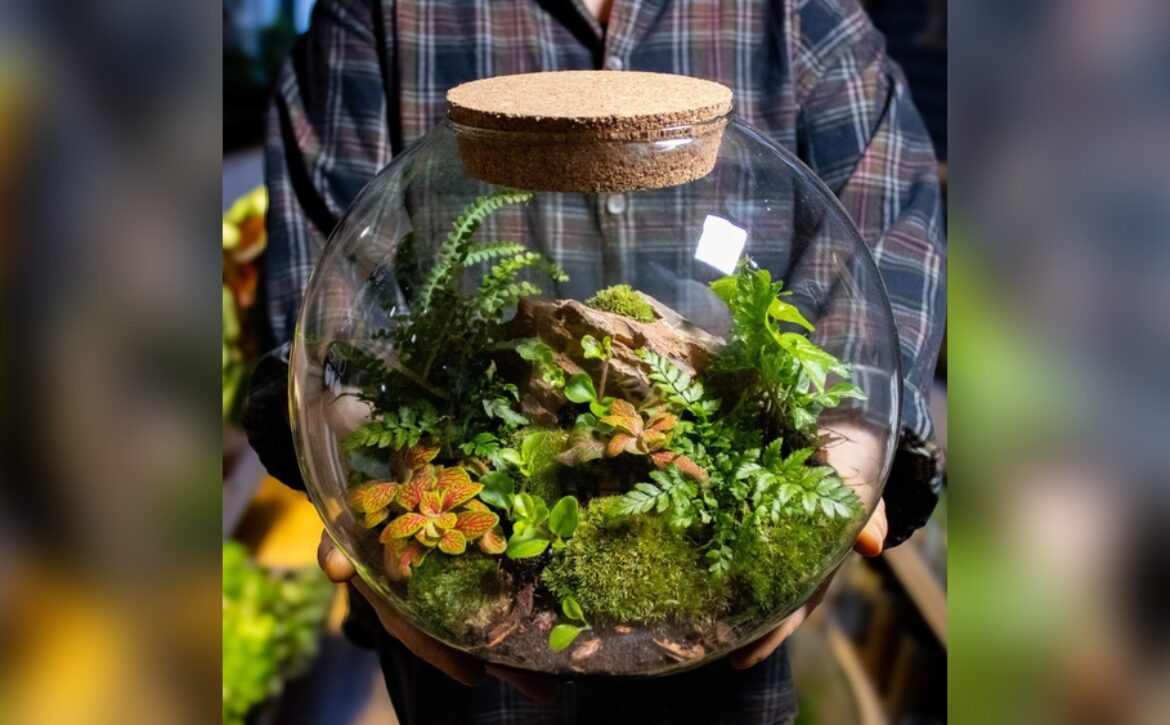
How to Become a Floristry Expert: A Step-by-Step Guide
Do you find yourself enchanted by the vibrant colors and delicate scents of flowers? Imagine being able to create stunning floral arrangements that captivate and bring joy to others.
Becoming a florist isn’t just about arranging flowers; it’s about crafting experiences and emotions through nature’s beauty. If you’ve ever wondered how to turn your passion for blooms into a fulfilling career, you’re in the right place. This guide will walk you through the steps of becoming a floristry expert, unlocking a world where creativity meets nature.
Discover how you can transform your love for flowers into a thriving profession that not only nurtures your artistic side but also brightens the lives of those around you. Dive in, and let’s explore the blossoming path to floristry together!

Discovering Your Passion
Explore the colorful world of floristry. Embrace creativity through arranging flowers in captivating designs. Transforming passion into floristry opens doors to beauty and artistic expression.
Discovering your passion for floristry is an exciting journey filled with creativity and self-expression. This is where your love for nature and artistry can bloom into a fulfilling career. As you start this path, it’s important to explore different aspects of floral design and identify your unique style.
Exploring Floral Design
Dive into the vibrant world of floral design by experimenting with different flowers and arrangements. Visit local flower shops and observe the various techniques florists use. Try creating your own bouquets at home, using a mix of colors and textures to see what resonates with you. Join workshops or online courses to learn the basics of floral design. These platforms offer valuable insights and hands-on experience. You might even discover a preference for certain flowers or arrangement styles. Consider volunteering at local events or farmers’ markets. This practical experience can be invaluable in understanding how different elements come together in floral design. It also helps you connect with like-minded individuals who share your passion.
Identifying Your Style
As you explore, take note of the designs that capture your attention. Do you prefer minimalist arrangements, or are you drawn to bold and dramatic compositions? Your personal style will begin to reveal itself through these preferences. Create a mood board with images of floral designs that inspire you. This visual collection can help clarify your style and serve as a reference for future creations. Over time, you’ll notice patterns and themes that consistently appeal to you. Reflect on your experiences and the feedback you receive. Which designs make you feel most confident and fulfilled? Identifying your style is an ongoing process, but with each creation, you’ll gain clarity and confidence in your unique floral voice.
Essential Skills For Florists
Floristry is a vibrant and rewarding career. It blends art with nature. Aspiring florists need essential skills to succeed. These skills help in crafting beautiful arrangements and satisfying customers. Let’s explore the key skills every florist should develop.
Creativity And Design
Florists are artists with flowers. Creativity is crucial. Each bouquet tells a story. Design skills help in selecting the right colors and textures. They create harmony and balance in arrangements. Imagination breathes life into floral designs.
Botanical Knowledge
Understanding plants is essential. Florists must know various species. This includes their growth patterns and care needs. Knowledge of seasonal flowers is vital. It ensures fresh and lasting arrangements. Proper care leads to customer satisfaction.
Customer Service
Florists work closely with clients. Good communication is key. Listening to customers helps create perfect arrangements. Patience and empathy build trust. A friendly attitude enhances the shopping experience. Happy customers return and refer others.
Educational Pathways
Exploring the world of floristry can lead to a fulfilling career. The journey begins with understanding the educational pathways available. Whether you prefer formal education, hands-on workshops, or online resources, there are diverse options to suit every learning style.
Formal Education Options
Colleges offer courses specifically for floristry. These programs teach design principles, plant care, and business skills. Students learn to create stunning arrangements. They also gain insights into the floral industry. Some schools provide diplomas or degrees in floristry. These credentials can boost your career opportunities.
Workshops And Certifications
Workshops offer practical experience. Many local florists host them. They cover topics like bouquet making and event decoration. Certifications are available through professional organizations. These validate your skills and knowledge. Completing a certification can help you stand out in the field.
Online Learning Resources
Online courses are perfect for flexible learning. Websites offer tutorials and videos. Some platforms provide interactive lessons. You can learn at your own pace. These resources are often affordable. They are ideal for beginners or those looking to enhance their skills.
Building Practical Experience
Building practical experience is essential in the journey to become a successful florist. It is not just about arranging flowers; it’s about understanding the nuances of the art, knowing the business side, and being able to deliver what your client envisions. Practical experience allows you to hone your skills, gain valuable insights, and become confident in your craft.
Internships And Apprenticeships
Internships and apprenticeships are fantastic ways to learn the ropes in floristry. These opportunities allow you to work alongside experienced florists who can teach you the tricks of the trade. You get to see firsthand how a florist shop runs, from dealing with suppliers to managing customer expectations. Think about the kind of florist you want to be and seek out businesses that align with those values. Are you more interested in event floristry or everyday bouquets?
Your choice will shape the skills you learn and the experience you gain. Remember, every florist started somewhere, often as an intern or apprentice, learning the essentials before branching out on their own.
Volunteering Opportunities
Volunteering can be a great way to build your floristry skills while giving back to the community. Many local events, such as weddings, charity functions, or community gatherings, require floral arrangements and decorations. Volunteering your time at these events can provide you with a hands-on experience in creating beautiful arrangements under time constraints and budget limitations.
Volunteering also helps you network with other florists and event planners, opening doors to potential job opportunities. Have you considered how volunteering could expand your horizons and refine your skills?
Starting Small Projects
Starting small projects is a practical way to apply your skills and creativity. Whether it’s designing floral arrangements for friends or decorating a small community event, these projects allow you to experiment and learn from your successes and mistakes. Keep it simple and focus on improving one skill at a time.
Create a floral arrangement for a friend’s birthday or a small gathering. As you grow more confident, tackle larger projects. What small project can you start today that will help you grow as a florist? Remember, every step forward is a step toward mastery.
Mastering Floral Techniques
Mastering floral techniques is essential for aspiring florists. These skills transform flowers into stunning displays. Understanding these techniques boosts creativity and confidence in floristry. Each technique offers unique ways to showcase floral beauty. Let’s explore the key techniques that every florist should know.
Bouquet Construction
Creating bouquets requires balance and harmony. Start with a focal flower to draw attention. Surround it with complementary blooms. Use greenery for texture and depth. Ensure stems are secure and well-trimmed. This helps the bouquet hold its shape. Choose colors that blend well together. Experiment with different flower types for variety.
Arrangement Styles
Explore various arrangement styles to find your favorite. Symmetrical arrangements offer a structured, formal look. Asymmetrical styles provide a more relaxed appearance. Cascading arrangements create movement and drama. Each style serves a different purpose. Understanding these styles enhances your design skills. Try combining styles for a unique effect.
Seasonal Floral Designs
Seasonal designs reflect nature’s changing beauty. Spring offers vibrant tulips and daffodils. Summer brings sunflowers and roses. Autumn features rich colors like orange and burgundy. Winter showcases evergreens and poinsettias. Use seasonal flowers for fresh, lively arrangements. This keeps designs relevant and exciting.

Creating A Floristry Portfolio
Building a floristry portfolio showcases your unique floral designs and creativity. Highlight your best arrangements with clear photos. Include detailed descriptions to demonstrate your skills and style.
Creating a floristry portfolio is a crucial step in establishing yourself as a professional florist. It’s your personal showcase, reflecting your style and creativity. A well-crafted portfolio can attract potential clients and open doors to exciting opportunities. But how do you create one that’s truly captivating? Let’s break it down into three key areas: showcasing your work, photography tips, and online portfolio platforms.
Showcasing Your Work
Your portfolio should tell a story. Choose a variety of floral arrangements that highlight different styles and techniques. Include bouquets, centerpieces, and installations that show your versatility. Arrange your photos in a way that guides the viewer through your journey. Start with simple designs and gradually introduce more complex arrangements. This progression can illustrate your growth and expertise. Don’t forget to add captions. Briefly explain the inspiration behind each piece or the occasion it was created for. This adds context and helps clients connect emotionally with your work.
Photography Tips
Great photography can elevate your floristry portfolio. Use natural light whenever possible to capture the true colors of your flowers. Early morning or late afternoon light can create stunning effects. Experiment with different angles. Shoot from above, at eye level, or close-up to highlight details. Variety in your shots keeps the viewer engaged. Invest in a good camera or hire a professional photographer. High-quality images reflect your professionalism and can make a lasting impression. Remember, your photos are your first handshake with potential clients.
Online Portfolio Platforms
Choose the right platform to showcase your work online. Websites like Wix and Squarespace are user-friendly and offer beautiful templates. They allow you to customize your portfolio to match your brand. Consider social media platforms like Instagram or Pinterest. They’re perfect for reaching a wider audience and engaging with potential clients. Use relevant hashtags to increase visibility. Keep your online portfolio updated. Regularly add new photos and remove outdated ones. This shows you’re active and constantly evolving in your craft. Creating a floristry portfolio is an exciting endeavor that requires creativity and strategy. What unique touches will you add to make yours stand out?
Networking And Community
Networking and building a community are crucial steps on your journey to becoming a successful florist. Connecting with others in the field not only expands your knowledge but also opens doors to opportunities that might otherwise remain hidden. Engaging with fellow florists, artists, and industry leaders can spark creativity and help you grow both personally and professionally.
Joining Florist Associations
Florist associations are a fantastic way to meet industry experts and gain access to resources that can enhance your career. These organizations often offer educational programs, workshops, and newsletters that keep you updated on industry trends.
Membership can also give you credibility. Potential clients and employers are likely to view you as more skilled and committed. Consider joining groups like the Society of American Florists or the British Florist Association.
Have you ever thought about how these associations can also serve as a platform for you to share your own experiences? Your story could inspire others and foster meaningful connections.
Attending Industry Events
Industry events are treasure troves of knowledge and networking opportunities. They range from local workshops to international conferences, each offering unique insights into floristry.
When you attend these events, you immerse yourself in a vibrant community. You can exchange ideas, learn new techniques, and discover emerging trends.
Think about how attending just one event could lead you to meet a mentor or discover a niche market. The possibilities are endless, and they often start with a simple conversation.
Collaborating With Other Artists
Floristry is a form of art, and collaborating with other artists can elevate your work. Whether it’s teaming up with photographers for a styled shoot or working with event planners for weddings, collaboration fuels creativity.
Consider the benefits of sharing your expertise while learning from others. A joint project can showcase your skills and expand your portfolio.
How might your own floral designs evolve when influenced by different artistic perspectives? Collaboration invites innovation and can lead to unexpected and beautiful outcomes.
Building a network and community is more than just collecting business cards. It’s about nurturing relationships that support your growth and keep your passion for floristry alive. Dive into these opportunities, and watch your career bloom!

Launching Your Floristry Business
Starting a floristry business involves creativity and passion for flowers. Learn essential skills and techniques to craft beautiful arrangements. Gain knowledge on sourcing quality flowers and managing a thriving shop.
Launching your floristry business is an exciting journey. With creativity at its core, floristry allows you to express art through blooms. Turning this passion into a business requires careful planning and strategic execution. From crafting a business plan to mastering your finances, each step is crucial. Dive into the essentials of launching a successful floristry venture.
Business Planning
A solid business plan is the foundation. Define your business goals clearly. Identify your target market. Understand their preferences and needs. Research competitors. Learn from their successes and mistakes. Choose your niche. It could be weddings, events, or retail. Set realistic objectives. Decide on pricing strategies. Outline your services and products.
Marketing Strategies
Effective marketing attracts clients. Build a captivating website. Showcase your floral designs. Use social media. Share stunning photos and stories. Engage with followers. Create helpful content. Tutorials, tips, and behind-the-scenes glimpses work well. Collaborate with local businesses. Partnering can expand your reach. Consider offering promotions. Discounts or special packages can entice new customers.
Managing Finances
Managing finances is vital for success. Track every expense and income source. Use accounting software. It simplifies record-keeping. Budget wisely. Plan for seasonal fluctuations. Save for emergencies. Understand cash flow. Ensure you have enough funds for smooth operations. Pricing must cover costs and generate profit. Regularly review your financial status. Make adjustments as needed.
Staying Inspired And Current
Explore the vibrant world of floristry by staying inspired and current with trends. Attend workshops to learn new techniques and styles. Follow floral designers online for fresh ideas and inspiration.
Floristry is an ever-evolving art that demands creativity and adaptability. To truly thrive in this vibrant field, staying inspired and current is crucial. Whether you’re arranging bouquets for weddings or crafting floral designs for events, keeping your ideas fresh and aligning them with the latest trends can set you apart. Let’s dive into some practical ways to stay ahead in the floristry game.
Following Floral Trends
Staying updated with floral trends can be as simple as following social media influencers in the floristry world. Platforms like Instagram and Pinterest are bursting with creative ideas and new styles. Attend flower shows and exhibitions whenever possible. They offer firsthand experience of what’s trending and can spark new ideas for your own creations. Consider subscribing to floristry magazines or online newsletters. They often highlight upcoming trends and provide insight into what customers might be looking for next season.
Continuing Education
Invest in workshops and courses to enhance your skills. Learning from experts can introduce you to new techniques and materials you might not have considered. Online courses are a flexible way to learn at your own pace. They often cover a wide range of topics, from basic arrangement skills to advanced design concepts. Join local floristry groups or associations. Networking with peers can open doors to new opportunities and shared learning experiences.
Finding Creative Inspiration
Step outside the floral world for inspiration. Visit art galleries, take nature walks, or explore different cultures. These experiences can influence your designs in unexpected ways. Keep a journal or sketchbook to jot down ideas as they come. Sometimes the most random thoughts can lead to innovative designs. Ask yourself, what moves you? Is it the color of a sunset or the patterns in a piece of fabric? Find ways to incorporate these elements into your floral creations. How do you keep your creativity flowing and stay ahead in floristry? Share your thoughts and experiences!
Frequently Asked Questions
What Skills Are Needed To Become A Florist?
To become a florist, you need creativity, attention to detail, and strong customer service skills. Understanding color theory and design principles is essential. Knowledge of plant care and floral arrangement techniques is also crucial. Good communication and organizational skills help manage orders and client relationships effectively.
How Long Does Floristry Training Take?
Floristry training duration varies. Certificate programs can take a few months. Diplomas may require one to two years. Apprenticeships or on-the-job training offer flexible timelines. Continuous learning through workshops and courses is beneficial. Experience plays a vital role in mastering the craft.
Is Formal Education Required For Floristry?
Formal education is not mandatory but beneficial. Many florists learn through hands-on experience and workshops. However, courses in floral design or horticulture can enhance skills and knowledge. A structured program helps with understanding advanced techniques and industry standards. It’s a valuable asset for career advancement.
What Are Common Challenges Florists Face?
Florists often face time management and supply chain issues. Seasonal demand fluctuations can impact business. Managing perishable inventory requires careful planning. Dealing with unexpected weather changes affects floral availability. Customer satisfaction demands creativity and adaptability. Balancing artistic vision with client requests can also be challenging.
Conclusion
Becoming a florist is a rewarding and creative journey. Start with learning basic flower arrangements. Practice often to hone your skills. Connect with local flower shops for hands-on experience. Consider taking floristry courses for deeper knowledge. Stay updated with floral trends and styles.
Build a portfolio to showcase your work. Networking with other florists can provide valuable insights. Always nurture your passion for flowers. Remember, patience and practice are key. Embrace the art of floristry with enthusiasm. With dedication, you can turn your love for flowers into a fulfilling career.
Enjoy every bloom and bouquet you create.





